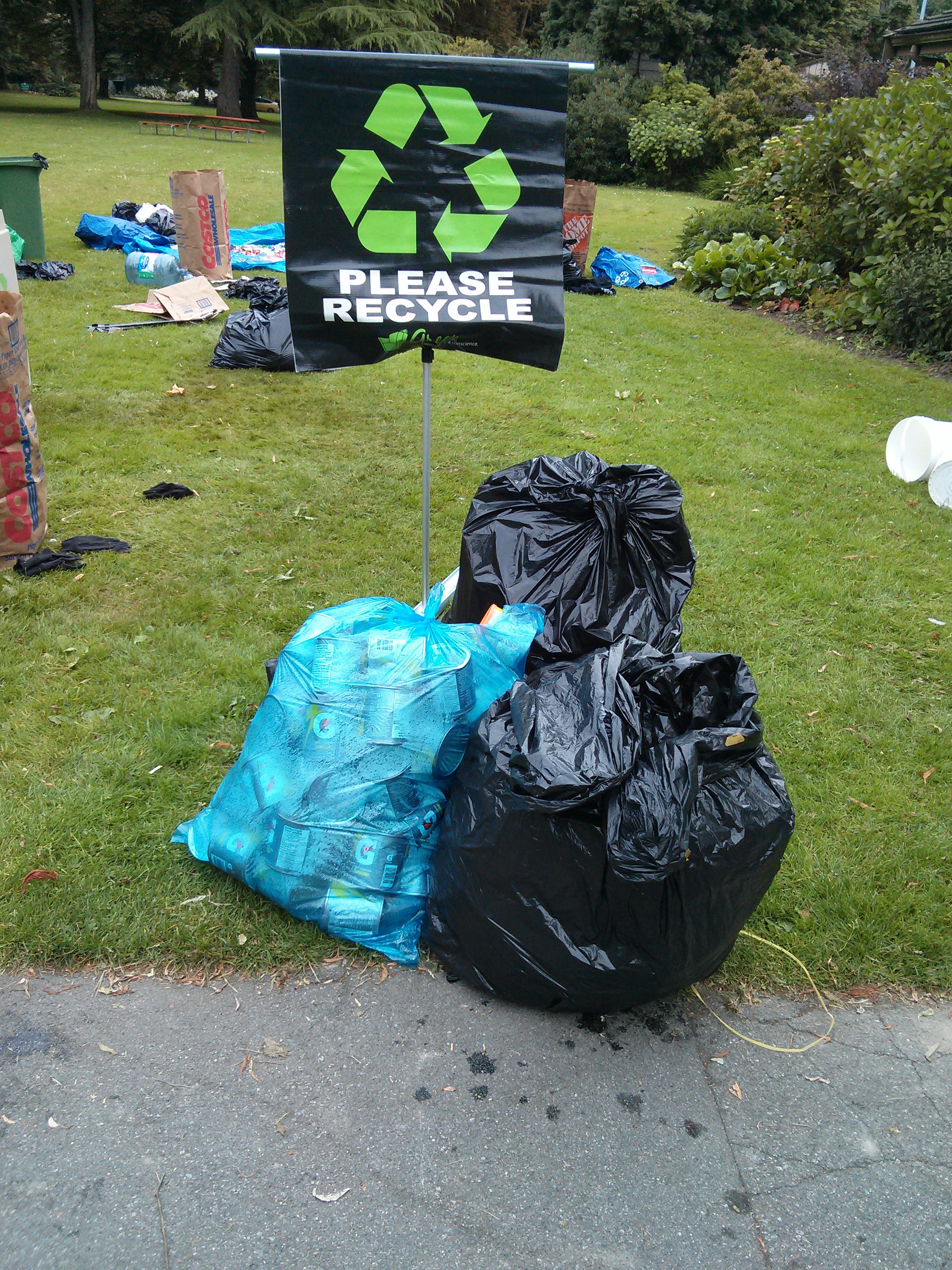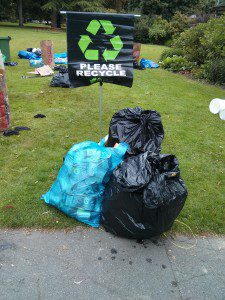Vancouver half-marathon produces only four bags of garbage

Think a race with almost 7,000 participants generates a lot of garbage? Think again.
The Scotiabank Vancouver Half-Marathon and 5K race on Sunday wasn’t just notable for its fast times or record number of participants. The race was also a testament to the power of recycling, diverting all but four bags of waste into recycling programs.

Photo courtesy Canada Running Series.
“There are events that say they are green and events that act on it,” says Clifton Cunningham, Western race director for organizer Canada Runner Series. “Our participants here in Vancouver asked about green initiatives and the impact of events on our environment. We listened and found the Council for Responsible Sport, the most comprehensive and measurable, green and sustainable initiatives.”
CRS is working to certify with the Council for Responsible Sport, an organization that supports and certifies environmentally responsible sporting events. Organizations are given a certain number of credits for achieving gains in areas such as waste, climate & energy, community impact and more. The more credits an event receives, the higher its certification level, from certified to “Evergreen.”
For Sunday’s race, CRS worked with Green Chair Recycling to help divert the waste. Early estimates say they were pretty successful, according to Cunningham.
“We will have a better idea of the numbers next week, when we receive our final report. At our Spring Run-Off 8K in March, we were able to achieve a 98 per cent diversion rate,” he said. “So far, the initial numbers for SVHM are 95 per cent, but as final weights are measured and more waste diverted our percentage will increase.”
How did they do it? “Volunteers from Green Chair helped direct participants to put their waste into properly sorted categories, plus [they did] post-event sorting through waste to ensure that the proper items were recycled,” Cunningham said. “We promoted the waste program on our website, and with a CityTV segment. But it is really the onsite volunteers that make all the difference.”
“We set up our clearly labelled recycling stations at the event but we couldn’t do this without our volunteers,” agrees Nicki Casley from Green Chair events. “We had about 40 volunteers with us during the Expo (Friday/Saturday) and the Sunday event.
“They are an amazing group of people ranging from 4 to 50 year olds and they assist in supervising the recycling stations to ensure that contamination during the event is kept to a minimum, educating the event attendees about recycling and then sorting and weighing all the garbage and recycling after the event,” Casley added. “Some of the volunteers put in well over 12 hours work over the weekend and we even have a couple of volunteers who help after the event (washing the hard and soft plastics and taking the recycling to the facilities).”
According to Green Chair Recycling, the team collected at least 1.5 tonnes of recycling during and after the race. The 2012 race created a dumpster full of garbage, but this year’s race managed to create only four regular-sized garbage bags.
To volunteer to help at an upcoming event, check out the event listing on the Green Chair Recycling website.


